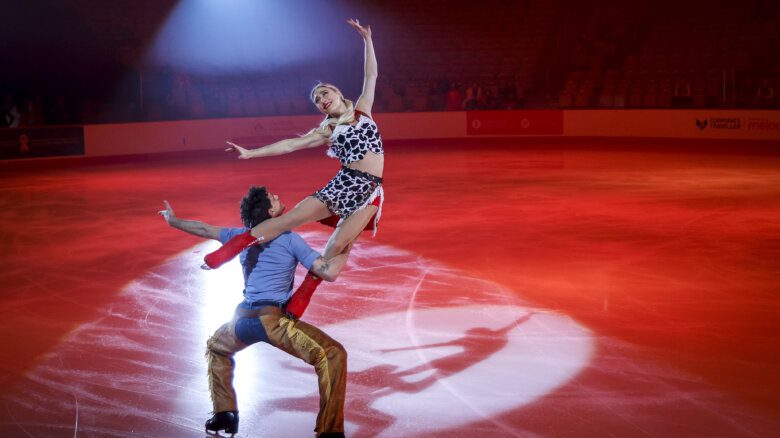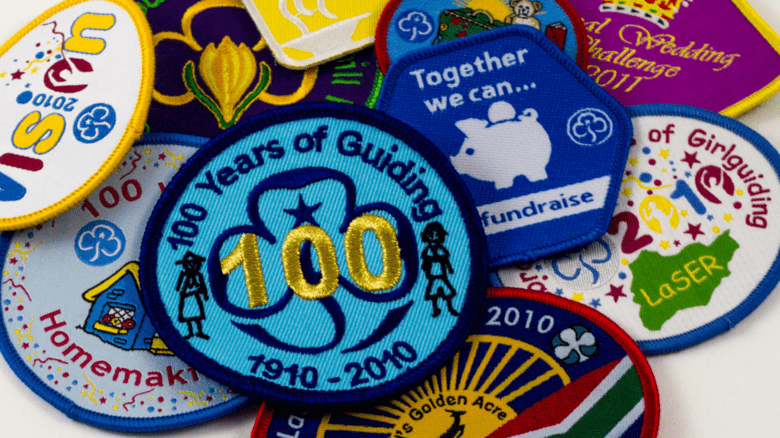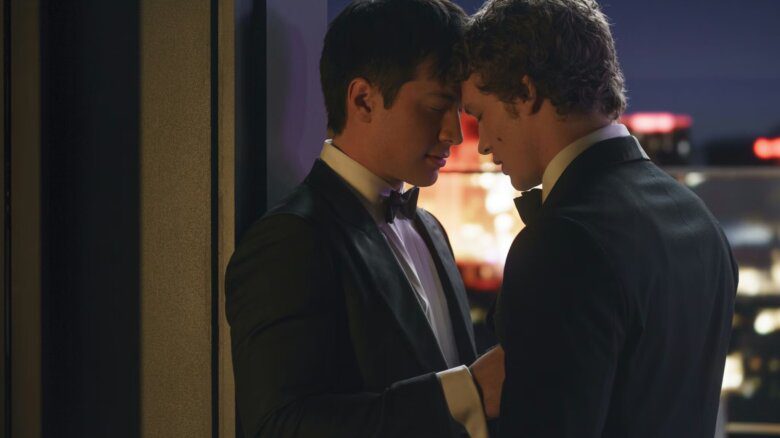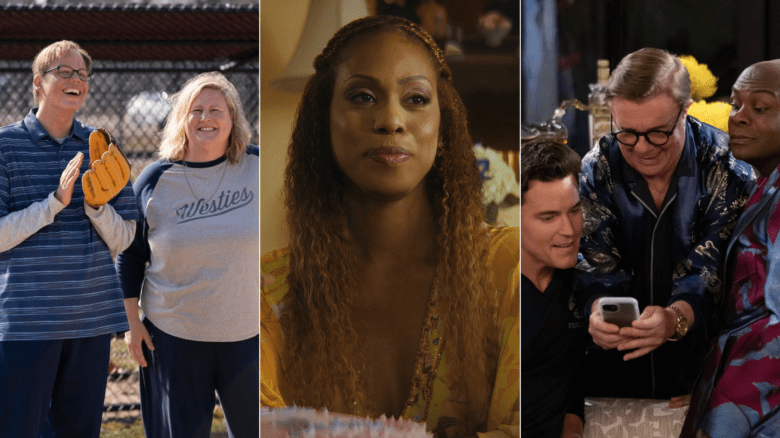Just call her Auntie. That’s how Chelazon Leroux’s half million TikTok followers affectionately refer to her. The Saskatoon-based drag queen is a sensation on the app, where her Auntie character has become a stand-in for many archetypes of Indigenous women.
Leroux’s Indigenous-infused humour and fashion may not have always been understood by the judges on Canada’s Drag Race, but her run on the show left legions of Indigenous fans across the country feeling deeply seen. By weaving work by artists like Lesley Hampton, culturally specific materials like ribbons and catchphrases like “Fuck around, find out” into her drag, Leroux showcased a unique brand of Indigiqueer joy that’s almost never seen on Canadian television.
After her elimination from the show, Leroux caught up with Xtra’s After the Sashay to talk about Indigenous representation, becoming an internet sensation and the fallout from her disagreement with Miss Fiercalicious.
My Indigenous pals really relate to your humour and drag persona. How do Indigenous cultures inform your drag sensibility?
It’s like any other culture or person’s experience. This is my lived experience. I’m going to reflect that. It’s a part of who I am. To say that it’s only representing one part of myself is inaccurate—it informs everything. It informs my humour, my storytelling, the way I approach life. It’s not just one aspect; it’s everything in my life.
On social media you’re known as Auntie. Can you explain what auntie means? Who is Auntie?
Auntie is my love letter to Indigenous women. Auntie is the women—plural—who raised me, the ones who showed me that it was okay to be who I am, who gave me unconditional love, humour and a sense of creativity. They gave me the permission to be who I am.
Auntie is a reflection of that. It’s wild so many people get it and relate to it. It has been a beautiful thing and I’m so grateful to have that character or persona represented.
Your conversation with Kaos about the impact colonialism has had on Indigenous people and their access to culture and identity was powerful. How did it feel to connect with them at that moment?
Canada’s Drag Race is such an impactful TV show because it represents our culture as a country. There are so many stories reflected on this season, and so many different ways to relate to these artists. Kaos is Métis and was not very comfortable discussing that—from what I knew. They’re going to tell their own story; I’m not going to tell it for them. When they opened up about their Indigeneity, I wanted to let them know it’s okay, you don’t have to filter your Indigeneity for anyone.
We live in this country that for so long shamed Indigenous people into not representing themselves. From literally outlawing practices, to putting us through very traumatic experiences and then still expecting us to filter our experiences or tell them in a way that’s very difficult. I don’t agree with that. We have to represent ourselves unapologetically.
I know there are so many Indigenous people who feel the way Kaos does. I just wanted that message to be out there that it’s okay. It’s our time. You don’t have to change who you are. You have to love who you are.
Congrats on hitting 500K followers on TikTok!
Thank you so much! It’s exciting. I’m grateful people relate to me and love the humour. It got me here. Look at me, I’m on Xtra! It’s stunning.
Let’s get real. Fierce thought she was the social media queen of the season. Do you think Fierce is jealous?
Everyone comes in [to Canada’s Drag Race] with a different priority, a different experience and a way of dealing with things. We did not see eye to eye—that much was apparent. We’re two very different personalities that clashed. I can’t say what she was feeling, I can only say what I was feeling and I didn’t feel the reciprocity. I was treating everyone the same, despite what people might say, I didn’t treat anyone differently. I tried to make jokes and maybe that didn’t translate.
After everything, I respect her as a visual artist. She makes for great drama on TV. You have to take everyone for what they’re good at, or at least try to see what they bring to the table, because everyone has something to offer.
I saw you tweeted about the hate Fierce received after she came for you. What’s your message to the fans who are responding to the conflict they see on the show?
There’s two ways I want to approach this. The first being that I’m not responsible for anyone else besides me. I take accountability for my own actions. I feel like there’s this perspective that because I’m very well known within the Indigenous community that I’m responsible for every single person who is Indigenous. That is not the truth. I’ve been made to feel that way and that perspective I don’t agree with.
Number two: you’re not going to like everyone in this world; you’re going to disagree with people. I don’t like certain people. That’s just life! But the way you decide to treat [someone]—that is a reflection on you as a person. If you choose to send death threats and hate to someone you don’t like, that’s disgusting. I don’t care how much I dislike a person, I would never wish that on another person. Keep it to yourself! Talk smack with your friends, not to their face.
You’re the first queen from Saskatchewan! What’s unique and special about drag in Saskatchewan?
We come from a place that’s very conservative. I’m not going to paint the entire place that way, but generally there’s conservative ideology and culture within the prairies. There’s a lot of trauma and hardship being a queer person on the prairies. [But] I think in turn, that great rebellion creates great art.
Queerness here on the prairies, we need to fight for it so much harder, so when we’re given the opportunity to showcase it through media, politics and art; we’re that much more resilient, clear, strong and creative in our message.
You recently performed at the very first Pride festival in your hometown of Dillon, Saskatchewan. That seems like a very full-circle moment. What was it like?
Growing up on that small reserve for a good part of my life, it was so formative for my take on the world. That wasn’t a very happy one at that time. I was different in a community of people who had a very specific idea of what you had to be. There was a lot of slurs, a lot of homophobia. There were also the aunties who loved me, the family who accepted me.
It was a moment of healing for me to go back and to be unapologetically myself as a queer Two-Spirit person and to show the next generation that it’s okay. That there’s going to be a community who loves you. It healed a part of myself and I’m so grateful for that.
In Episode 2, you wore a dress designed by Lesley Hampton, an Anishinaabe artist who’s one of the leading Indigenous designers on Turtle Island. Did you get to collaborate with a lot of Indigenous creatives on your package for the show?
You sure it’s not just another black dress?
Lesley Hampton is a BIG deal in Canadian fashion!
Do you want to tell that to the judges? But it’s said and done.
In my preparation for the show, I was inspired by Symone from Season 13 of Drag Race. She brought so much Black culture to every single runway. My goal was to represent Indigenous fashion, which we know now is very misunderstood. Those who don’t have the context may see it as very basic.
When I got the category Goddesses of the Ancient World, I thought, “No shit! Sky Woman! We’re going to be in the territory where that story comes from.” The artist, Lesley, is from that territory. To me, that look and that dress was my land acknowledgement. It acknowledged the land I was working on. I had to respect that because I’m a guest there, I’m a visitor on that territory. I wanted to tell that story.
People may be learning about [Sky Woman] for the first time, which is awesome. But I don’t want to hear anyone’s opinions that are not of that nation. Only those people can tell me whether or not that was a good representation of Sky Woman. You’re allowed to have your opinion, but to me the only valid critiques I want to hear are of that land, those people and that nation where that story comes from.
It’s such a beautiful story. It’s the reason we’re all here. I’m glad I got to show that through the medium of drag.
You made a massive impact with your run on Canada’s Drag Race. What’s next for you?
I’m quitting drag right after this interview! I’m exhausted. I could just nap. Sell the wigs. No, there are shows, content. There’s not going to be an album, but hopefully a comedy tour. I’d love to do that. I love telling jokes.
My goal in life is to get on Reservation Dogs. I’m obsessed with that TV show! Any time there’s Native TV I’m like, “Get me on there! I’ll send a smoke signal. I really will!”
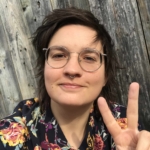

 Why you can trust Xtra
Why you can trust Xtra